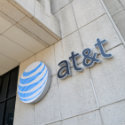
Despite its nationwide rollout of 5G wireless service and launch of HBO Max, AT&T took a financial beating in the second quarter because of the COVID-19 pandemic.
AT&T suffered subscriber and revenue losses across the board in the spring quarter as the novel coronavirus infected every aspect of its business. Overall revenues sank to $41 billion, down 9% from $45 billion a year earlier, with the pandemic accounting for about $2.8 billion of that $4 billion hit.
On the wireless side of the business, AT&T reported that it shed 151,000 postpaid customers in Q2, much worse than Wall Street's consensus estimates of a 4,000-sub gain. That loss included 338,000 customers who stopped paying their bills but the company kept on the network to comply with the FCC's Keep America Connected program. AT&T added 72,000 wireless postpaid subscribers in the year-ago period.
As a result, wireless revenues slipped to $17.1 billion in the quarter, down from $17.3 billion a year ago. But the company's wireless earnings before interest, taxes, depreciation and amortization (EBITDA) margin did edge up to 45.6% from 44.9% the year before.
Speaking on their earnings call Thursday morning, AT&T executives said they expect those numbers to improve in the third quarter as their retail stores gradually reopen throughout the US. But they also said some stores may not reopen or may close as they consolidate and streamline their retail outlets.
Even with the launch of HBO Max this spring, AT&T took its biggest financial hit on the media side of its business. Revenues at its WarnerMedia unit fell to $6.8 billion, down 23% from $8.8 billion last year, because of the absence of theatrical releases, lower TV ad sales and the lack of live sports. Company officials estimated that COVID-19 accounted for $1.5 billion of that decline.
Following what new AT&T CEO John Stankey termed "a flawless launch" of HBO Max, the supersized streaming video service that the company rolled out nationally in late May, the company reported that it closed out June with 36.3 million US subscribers to HBO Max and HBO, up from 34.6 million subs at the end of last year. Citing "strong customer engagement" with HBO Max, Stankey said about 4.1 million HBO customers have activated their Max accounts so far, including about 1 million wholesale subscribers to AT&T.
On the pay-TV side of the business, AT&T continued to shed subscribers by the truckload. The company reported that it closed June with 17.7 million pay-TV customers, down 886,000 subs for the quarter, with its DirecTV satellite unit accounting for most of that drop. As a result, the provider has now lost 3.9 million premium TV subs over the past 12 months, shrinking its customer base by 18%.
In addition, AT&T lost 68,000 streaming video subscribers. Due to that loss, its AT&T Now "skinny" bundle service closed the quarter with 720,000 subs, down 46% from a year earlier.
Finally, AT&T reported an overall loss of 102,000 broadband subscribers despite picking up 225,000 customers for its AT&T Fiber service as it continued to shed DSL and other subs. We'll have more to say about AT&T's broadband results in a story later today on our sister site, Broadband World News.
AT&T's stock price slipped in early morning trading today, falling 1.4% to $29.73 as of 11 a.m. EST.
— Alan Breznick, Cable/Video Practice Leader, Light Reading
About the Author(s)
You May Also Like











